The next instalment in our 21st-Century Architecture: 25 Years 25 Buildings series profiles Terminal 4 at Madrid-Barajas Airport by RSHP and Estudio Lamela, the peak of a golden age of airport design.
Awarded the RIBA Stirling Prize in 2006, the vast terminal – one of the largest in Europe – represented a high-point in airport design, during which the typology became synonymous with the predominantly British style of high-tech architecture.
With its undulating, bamboo-lined roofs, generous skylights and brightly coloured columns, Madrid-Barajas Terminal 4 achieved the rare feat of humanising the airport terminal, a space more often associated with anonymity, homogeneity and general unpleasantness.
As Guardian critic Oliver Wainwright put it, Madrid-Barajas was “a place you might actually want to stay for a while, rather than escape as soon as possible”.
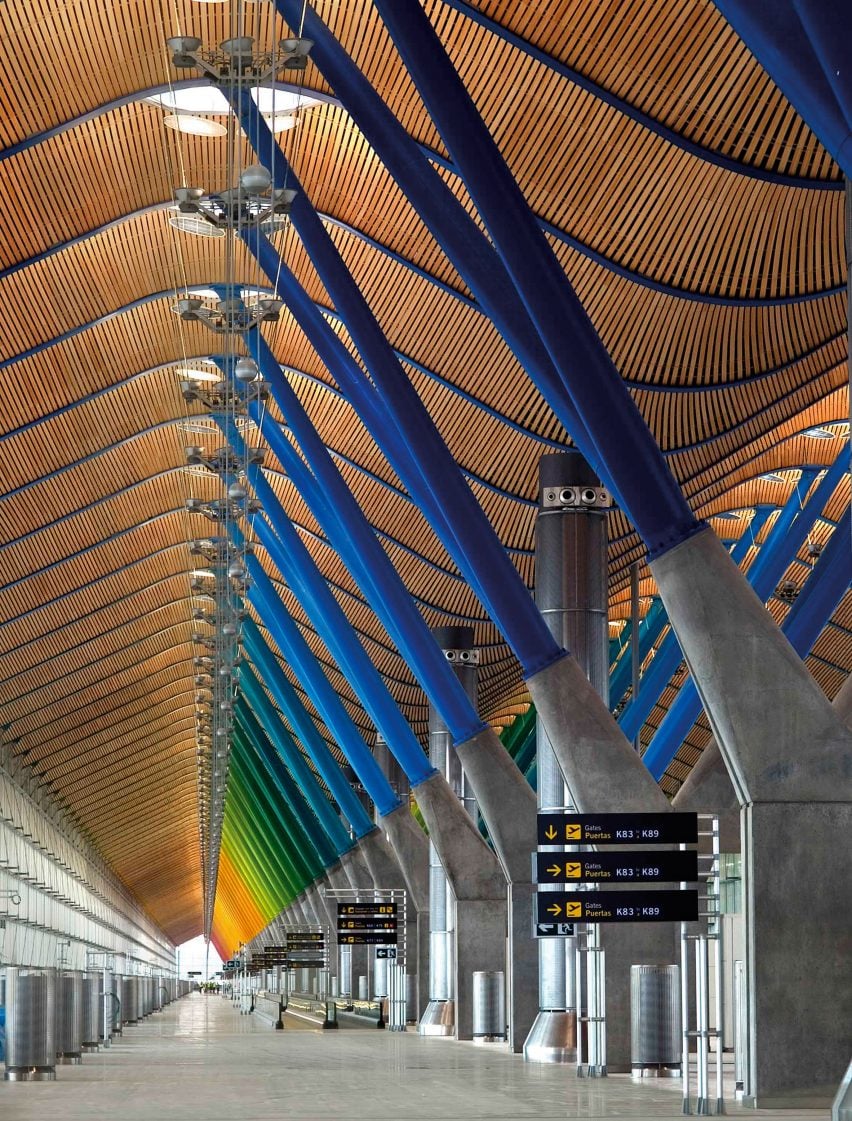
High-tech’s reinvention of the airport terminal began in 1991, with the revolutionary London Stansted terminal by the aeroplane-obsessed Norman Foster, a close friend and former collaborator of Rogers.
Stansted set a precedent for a rush of high-tech airport projects by both Foster himself and his high-tech compatriots, including Renzo Piano – notable in particular for the Kansai International Airport in 1994 – Nicholas Grimshaw, and Rogers.
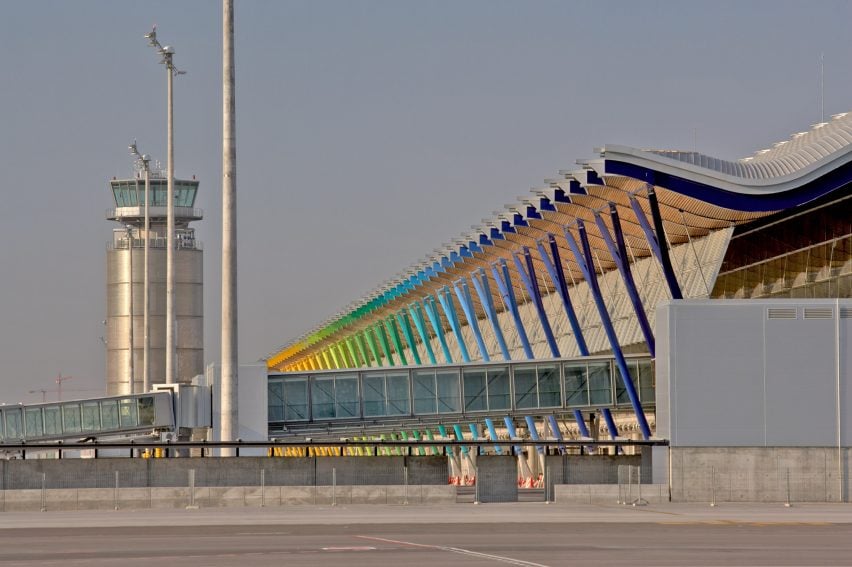
What the high-tech style had proven is that it was possible to blend the romantic era of the airport terminal with the decidedly unglamorous realities of a new era of climate-be-damned budget flights. The “big shed” terminal, as it was often termed, was here to stay.
Jonathan Glancey summed this up in 2006, writing that “it might be said that between them, Richard Rogers, Renzo Piano and Norman Foster, in collaboration with their fine engineers, have all but reinvented the international airport terminal”.
But of all the examples from these two decades, it is Rogers’ work at Madrid-Barajas that feels the most civic-minded and human-centred.
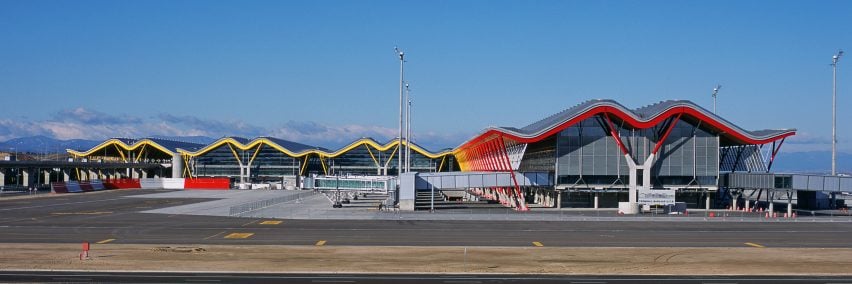
If, as Edwin Heathcote wrote in The Architectural Review, the big sheds of high-tech leaned more towards the “agricultural”, Rogers and Lamela seemed to appreciate that the thousands of new passengers they were about to welcome to Madrid need not feel like cattle.
“It’s all about colour and light and space and transparency and it’s all about making people look as though they are important in that space,” Rogers told the BBC after his Stirling Prize win.
“They’re not squashed by low ceilings or dominated by retail and shops,” he said.
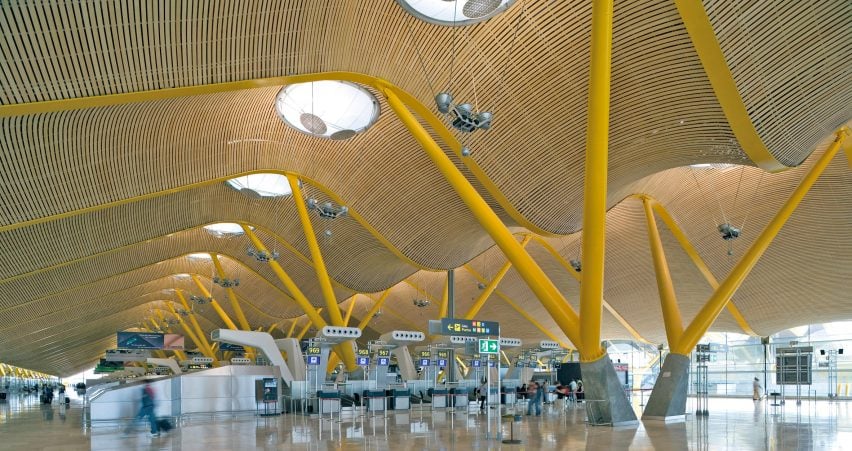
It was amid the airport terminal’s reinvention that the competition for a new terminal at Madrid-Barajas was launched in 1997, intended as a means of putting the airport on a level pegging with other major international hubs in Europe.
RSHP – then known as Richard Rogers Partnership – was awarded the project alongside Spanish practice Estudio Lamela and engineering firms TPS and Initec.
The team’s vision was typically high-tech; the terminal’s spaces were to be loose-fit and flexible to enable future alterations, and designed with what Rogers called a “direct simplicity”, both to maximise natural light and facilitate speedy construction.
A place you might actually want to stay for a while, rather than escape as soon as possible Oliver Wainwright – Guardian
Rogers knew all too well the importance of speed. At the time of winning the competition, the firm was still working on Heathrow Terminal 5 – awarded to the firm in 1989 – which would take 19 years to complete after the longest public inquiry in British history.
But what had been bad news for Heathrow provided valuable lessons that could be applied to Madrid-Barajas, which despite its massive size was completed in just eight years.
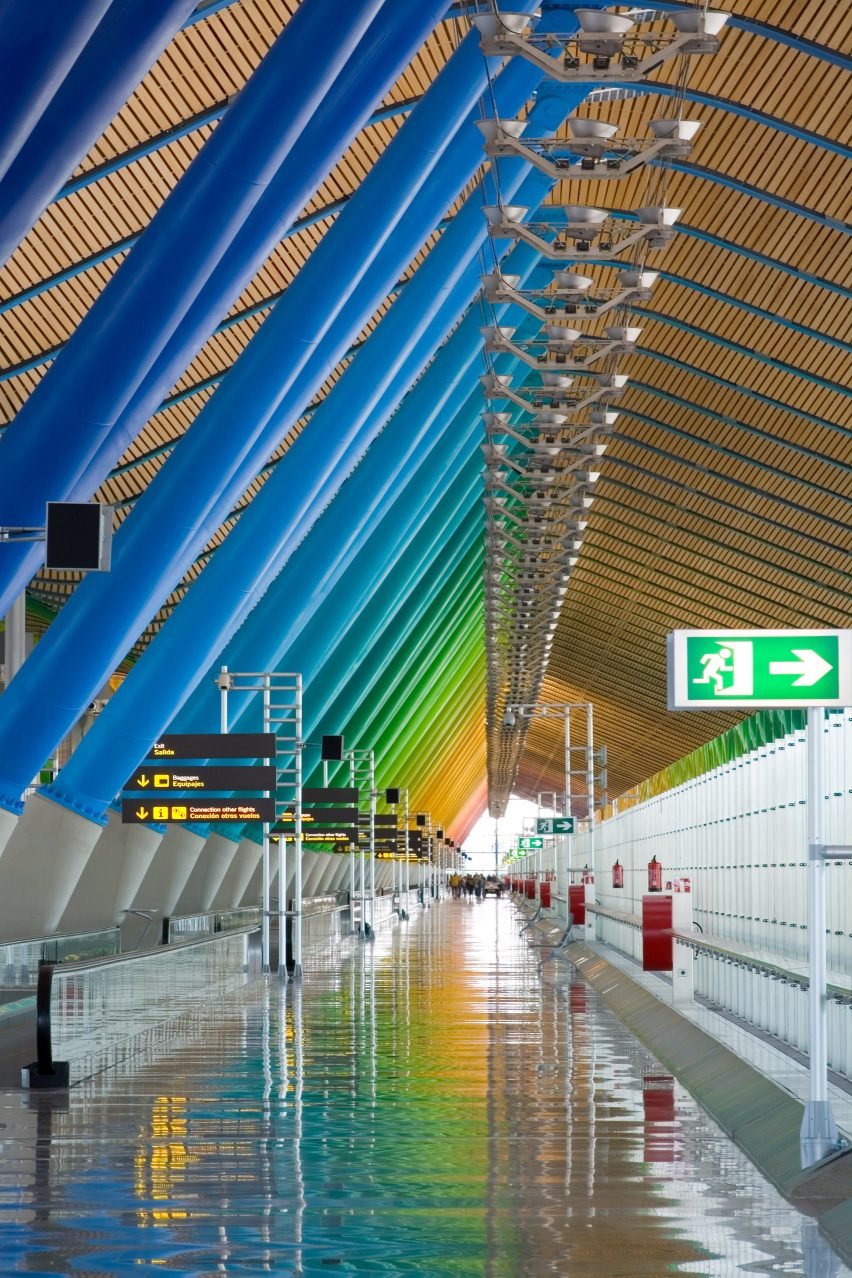
The design of T4 has three core elements, the first being the main terminal for national and Schengen flights, which occupies a 500,000-square-metre volume abutted by a 310,000-square-metre car park. Across the runways, some two kilometres away, a tunnel connects to the terminal’s satellite building, catering for international arrivals in an almost 300,000-square-metre volume.
Even by airport standards, this was a vast undertaking, requiring the nearby River Jarama to be re-routed. Indeed, one of the Stirling Prize jury’s comments was simply to acknowledge “the sheer scale and complexity of what has been tackled and achieved”.
That the main buildings appear relatively low-lying in the landscape is thanks to a vast basement beneath, containing three levels in addition to three glazed storeys above ground, which in both volumes are topped by large wavy roofs.
“We felt we needed to cover the building with a very light structure that could provide the impression of grace and elegance,” Estudio Lamela founder Carlos Lamela told the Guardian.
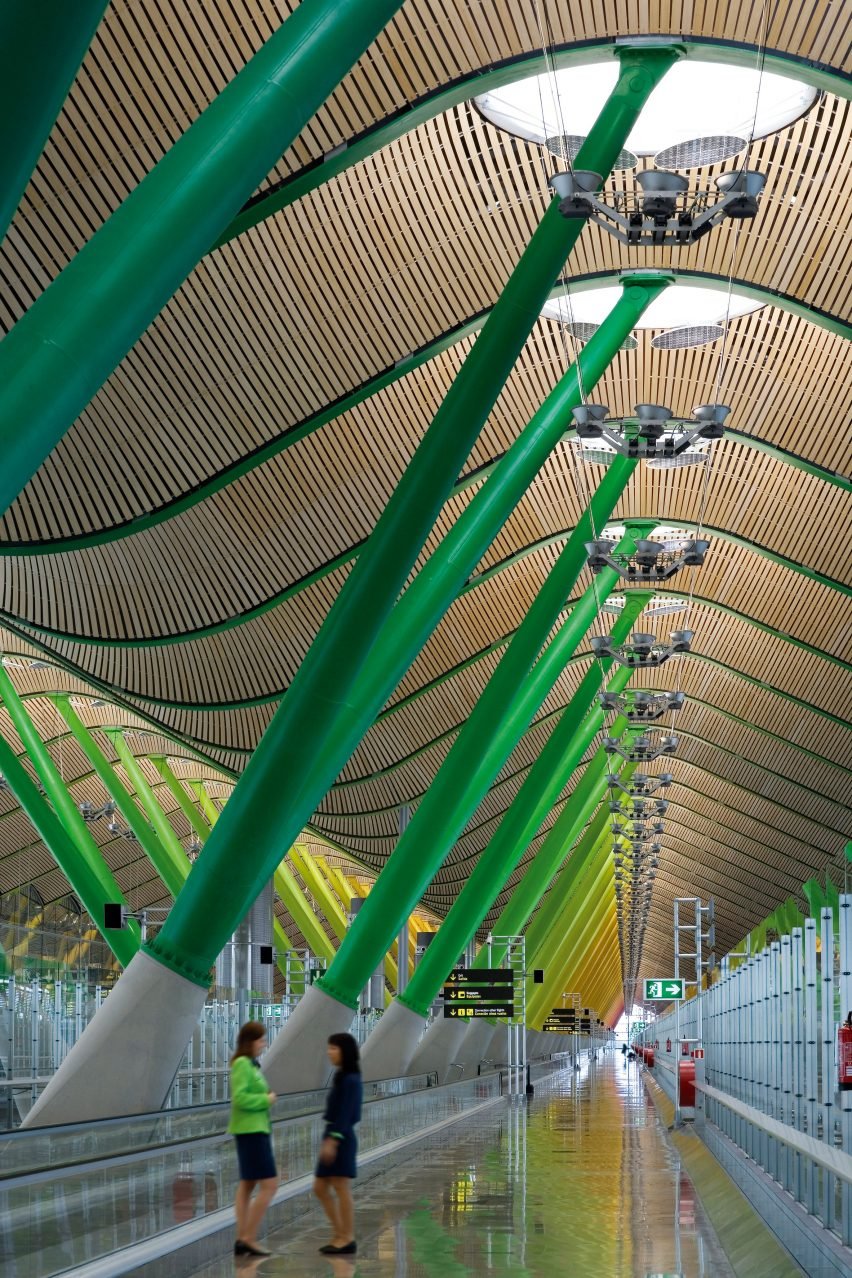
In section, this roof is a gull-wing shape, extruded via a series of repeating sections framed by curved beams overhead and forking steel columns with concrete bases below.
The peaks of gull-wing shape divide the spaces below into three linear sections, separated by rows of circular skylights – described by Rogers as “canyons” – which pull natural light down through the building.
I usually get off flights relieved to stretch my legs. Only Madrid adds a spring to my step Michael Skapinker – Financial Times
Around the perimeter of the building, the roof extends outwards, where a wave-edged canopy shelters the external routes and drop-off spaces.
Perhaps the most important gesture in the building is the distinctly un-high-tech choice of bamboo planks to line the ceilings, which combined with the ample natural light bring a feeling of warmth and openness to the interiors.
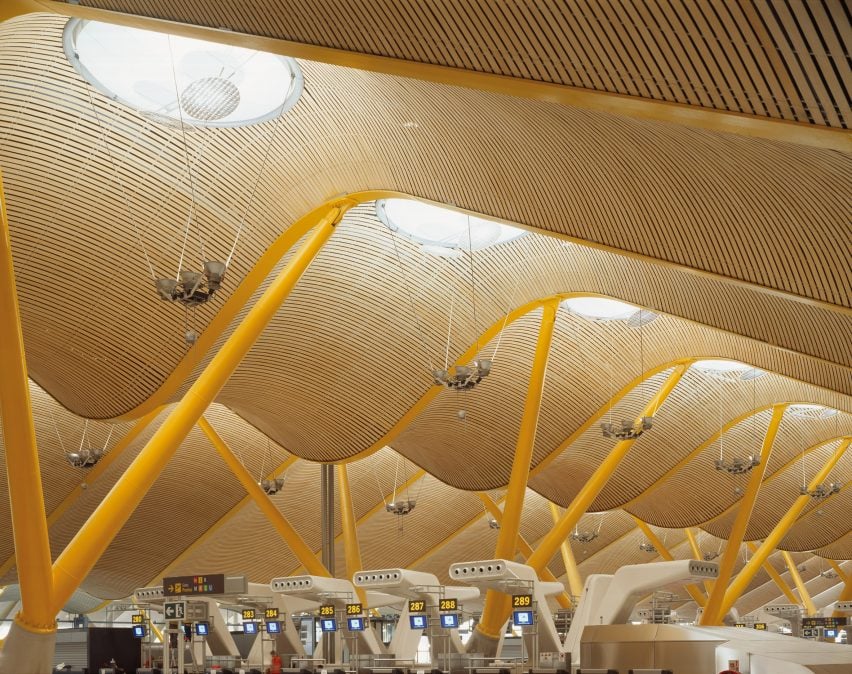
The steel structure of both buildings is finished in a variety of bright colours, a Rogers signature that here serves as a way-finding tool both to specific terminals and the cardinal points – with blue for north, red for south and yellow for the central section.
While the bright colours may have the opposite effect to the soothing wooden ceilings for some, they form a crucial part in the triumvirate of light, colour and space that define the scheme.
Any time spent in the majority of airports today will demonstrate that Roger and Lamela’s vision for a place that prioritised the experience of people remains a rarity, and that Madrid-Barajas remains one of only a handful of examples to be looked up to.
As Michael Skapinker wrote in the Financial Times, “I usually get off flights relieved to stretch my legs. Only Madrid adds a spring to my step.”
Did we get it right? Was Madrid-Barajas Terminal 4 the most significant building completed in 2006? Let us know in the comments. We will be running a poll once all 25 buildings are revealed to determine the most significant building of the 21st century so far.
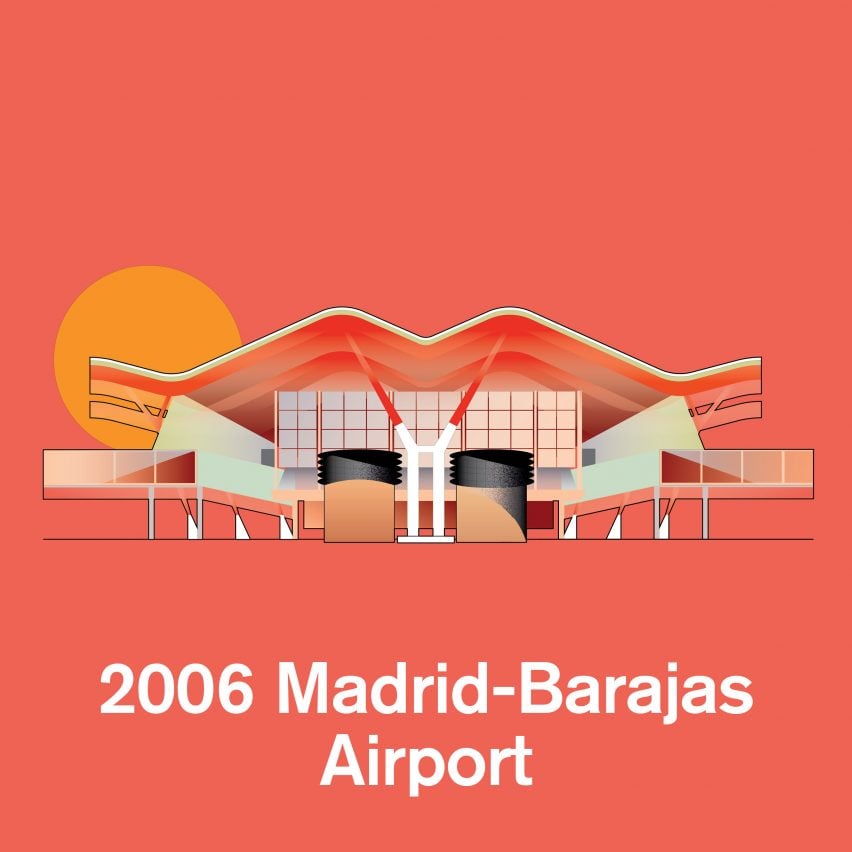
This article is part of Dezeen’s 21st-Century Architecture: 25 Years 25 Buildings series, which looks at the most significant architecture of the 21st century so far. For the series, we have selected the most influential building from each of the first 25 years of the century.
The illustration is by Jack Bedford and photography is by Manuel Renau unless stated.
21st-Century Architecture: 25 Years 25 Buildings
2000: Tate Modern by Herzog & de Meuron
2001: Gando Primary School by Diébédo Francis Kéré
2002: Bergisel Ski Jump by Zaha Hadid
2003: Walt Disney Concert Hall by Frank Gehry
2004: Quinta Monroy by Elemental
2005: Moriyama House by Ryue Nishizawa
2006: Madrid-Barajas airport by RSHP and Estudio Lamela
This list will be updated as the series progresses.

